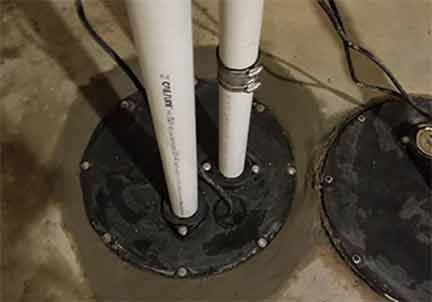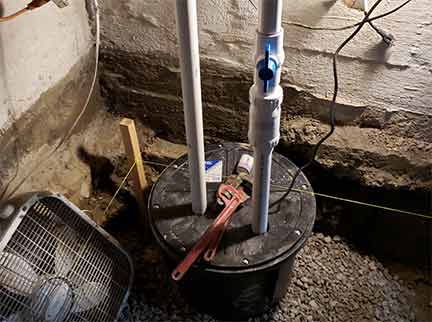Sewage backup is one of the most damaging plumbing emergencies you can have in your home. Imagine the horror of sewage flowing into your home, not only ruining your floors and belongings but also subjecting your home to terrible smells. If you’re a landlord, you already know this means your property will be deemed uninhabitable. This is a plumbing issue you can certainly do without.
One trusted way to prevent this problem in your home is to install a sewage ejector pump in the house. But what is a sewage ejector pump? How does it work? What do you need to know before installing a sewage ejector pump in your home?
What is a sewage ejector pump?
A sewage ejector pump operates on the same principle as a sump pump. Just like a basement sump pump, this system comprises of a pump housed inside a basin. This basin or holding tank, along with its pump, is located below ground inside the home.
But unlike a sump pump system, which is designed to remove floodwater entering the home, a sewage ejector pump system holds wastewater from the home before pumping it into the main sewer lines in the street.
How does a sewage ejector pump work?
- Waste from the various plumbing fixtures in the home flows easily into the basin because the drain lines are sloped down into the sides of the basin.
- For a moderate-sized home, the basin can hold up to 30 gallons of waste. This water will stay inside the basin until it reaches a certain level.
- Inside the basin are movable floats that rise with the water level. When the water in the basin reaches the threshold, the flotation device triggers a switch to activate the pump.
- The pump removes the wastewater by raising it to the level of the main sewer line in your home or the city sewer lines in the street.
- Once the basin is emptied to a specified level, the pump shuts down.
- But before the liquid is pumped out of the basin, it passes through a grinder inside the sewage ejector, which breaks apart the clumped solid waste.
- Most sewage ejector systems have a water level alarm that triggers when the water in the basin rises to a certain level. If this alarm goes off, it means there is a problem with the pumping mechanism.
- A lot of sewage ejector systems are equipped with a secondary pump which serves as a backup when the main pump fails or is being repaired.
Does your home need a sewage ejector pump?
Your home needs a sewage ejector pump if the bathroom, laundry, or any plumbing fixture in the house is located at a level below the main sewer lines in the street. Where the municipal lines are located higher than a fixture in the home, wastewater will not flow properly.
This is because the flow of wastewater from your home depends on gravity. In order to flow freely, water must be able to move in a downstream fashion. In other words, your home’s plumbing fixtures must be located at a higher level than the city’s sewer lines.
Ejector pumps are also needed in homes with a septic drain-field system, such as those found in rural areas. Without a sewage ejector system, homes that fit the above description run the risk of sewage backing up into the basement or sewer gas seeping into the home.
Before you install a sewer ejector pump system
What do you need to know or get before installing a sewage ejector pump system in your home?
- A permit – In most locations, you will require a permit to install a sewage ejector pump system in your home. This is because of the potential damage to the city’s sewer lines if your home’s sewage ejection pump is not properly installed.
- Pump size – Sewage ejector pumps come in a range of sizes. The right pump for your home depends on the amount of wastewater generated by the home. Typically, an average-sized home needs a pump with a ½ – ¾ hp motor.
- Budget – Sewage ejector pumps cost anywhere from $400 to $1000. This price depends on the size and brand of the pump. If the pump system will not be subject to heavy use, you can get away with buying a less expensive one. But you really don’t want a system that you will have to repair often. Worse, if the pump fails it can cost you tens of thousands of dollars worth of damage.
- Other system components – In order to function properly, the system needs the following:
- A sump basin – The underground tank where sewage water is stored until it is removed.
- Vents – Vents help to equalize air pressure and also provide an outlet for sewer gases.
- Check valve – This is located between the outlet pipe and the main sewer line, to prevent backups.
The right contractor – Due to the critical role of the sewage ejector system, this is not a job you should attempt to do yourself. It is best to hire a skilled plumber for an ejector pump installation.

